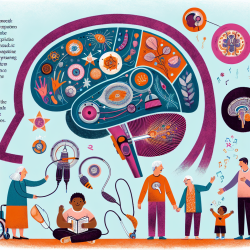As a practitioner dedicated to improving outcomes for children, it is crucial to stay informed about the latest research and its practical implications. The recent study by the French Myotonic Dystrophy Clinical Network, titled "Unravelling the myotonic dystrophy type 1 clinical spectrum: a systematic registry-based study with implications for disease classification," provides significant insights into Myotonic Dystrophy Type 1 (DM1). This blog aims to highlight key findings from the study and offer actionable strategies to enhance the care of children with DM1.
Understanding Myotonic Dystrophy Type 1
DM1, also known as Steinert's disease, is a genetic multisystem disorder characterized by a high variability in clinical spectrum and related disabilities. Symptoms can manifest at different stages of life, from congenital onset at birth to late-onset in adulthood. The disease affects multiple organs and systems, including skeletal muscles, the heart, and the central nervous system.
Key Findings from the Study
The study highlights the significant cognitive and behavioral challenges faced by children with DM1. Intellectual disability, communication difficulties, and social role limitations are prevalent, impacting their ability to engage in family, work, and social activities. The transition phase from adolescence to adulthood is particularly critical, as it is marked by significant psychosocial challenges.
Actionable Strategies for Practitioners
To effectively support children with DM1, practitioners can implement the following strategies:
- Multidisciplinary Approach: Collaborate with medical experts, school personnel, and parents to create a comprehensive care plan. This ensures that all aspects of the child's health and development are addressed.
- Early Speech Therapy: Recognize communication issues early and refer children for speech therapy to address dysarthria and other speech-related challenges.
- Educational Support: Integrate specific teaching strategies into the school setting to manage cognitive difficulties. Tailor educational programs to the child's needs, focusing on enhancing attention, memory, and processing speed.
- Psychosocial Programs: Develop programs that support the child's emotional and social development. Address issues such as apathy, fatigue, and social integration through targeted interventions.
- Continuous Monitoring: Implement regular follow-up visits to monitor the child's progress and adjust care plans as needed. This helps in early identification and management of comorbidities like Autism Spectrum Disorder (ASD) and Attention-Deficit/Hyperactivity Disorder (ADHD).
Encouraging Further Research
While the study provides valuable insights, there is still a need for further research to explore long-term outcomes and effective interventions for children with DM1. Practitioners are encouraged to stay engaged with ongoing research and contribute to studies that aim to improve the quality of life for these children.
To read the original research paper, please follow this link: French Myotonic Dystrophy Clinical Network. Unravelling the myotonic dystrophy type 1 clinical spectrum: a systematic registry-based study with implications for disease classification.










